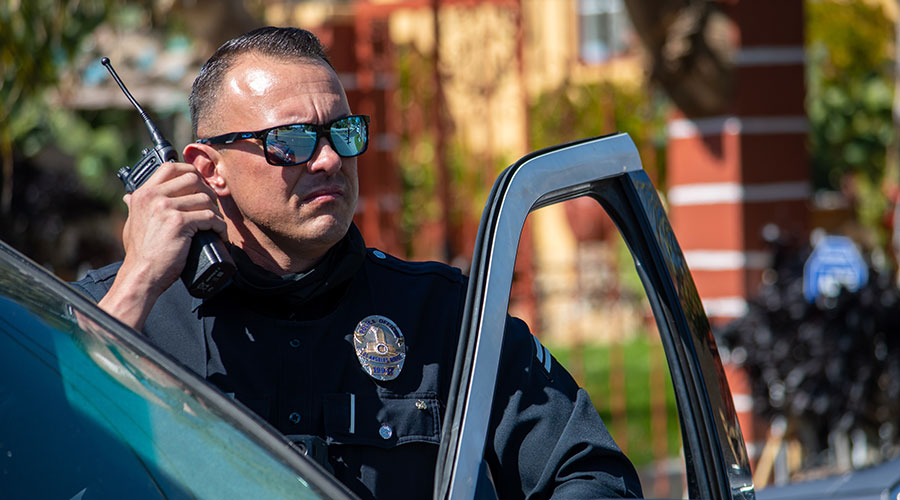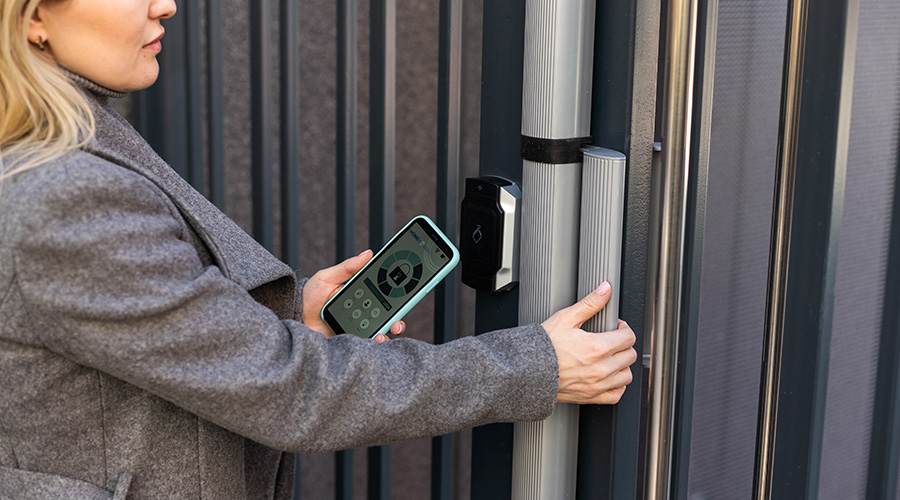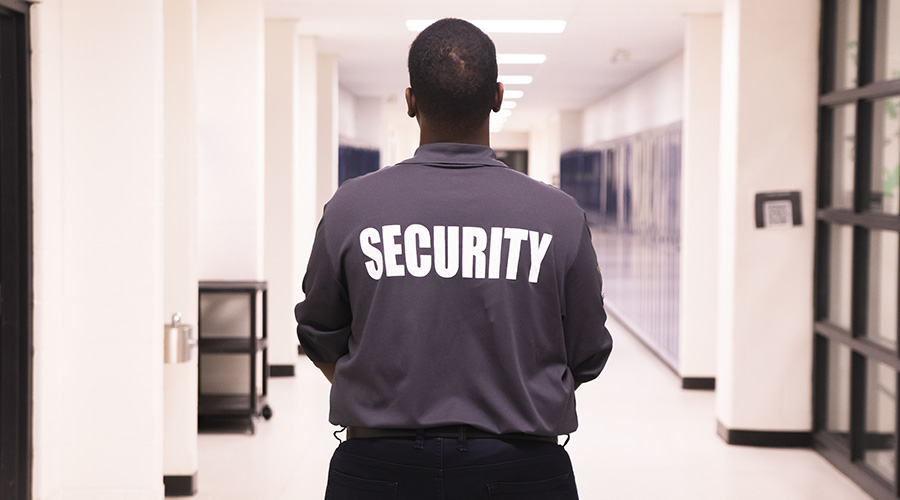How to Perfect Lockdown Drills in Facilities
Drills help building occupants stay safe during real-life emergency events.
By Mackenna Moralez, Associate Editor
OTHER PARTS OF THIS ARTICLEPt. 1: This Page
The next generation of maintenance and engineering managers is already poised to be different than their predecessors. Growing up in the era of smart technology, Gen Z and younger Millennials are already capable of using new and emerging technology products and software. However, this is the generation that takes security and safety more seriously than others as they grew up doing drills in school.
Brian Higgins, founder of Group 77, believes that practice makes perfect when it comes to security drills. For example, practicing lockdown drills helps building occupants know the exact steps that need to be taken if an emergency situation were to arise. Drills allow participants to remain calm and learn how to properly respond.
“If you go to 1999 or prior to that, we didn’t really have what we have today, which is a regular tempo of mass shootings and other violent events in buildings,” Higgins says. “When Columbine occurred, we know that kids and teachers died while police officers were outside waiting for a tactical team. It (the shooting) immediately changed things. We realized we could no longer wait for these special teams to respond when we had cops with guns on the scene. In the meantime, that still takes moments. In the very definition of an active shooter, we have a person who is actively pulling a trigger trying to hurt people.”
Every second that passes during an emergency event, somebody could get hurt or die. Time is of the essence, and it is essential that building occupants make it difficult for the shooter to get victims and give the police enough time to get there. Locking down facilities can help save lives.
“The people in the building don’t just sit around and wait to get assaulted or shot,” Higgins says. “In these lockdowns, occupants should think about how to prevent the shooter from being able to see inside the room. The thought process there is if the shooter is looking for victims and a door is locked, they’re wondering if they should waste time on the door or if they should put in the effort to get the door open, until they move on. So, the idea of a lockdown is to prevent the shooter from getting to you and to prevent them from seeing you. If you have a door that you can lock, make sure it’s substantial and make sure that the shooter can’t see inside the door.”
Key procedures of lockdown drills include:
- Locking/barricading all doors
- Turning off all lights
- Ensure building occupants are out of hallways and brought into the nearest secure room
- Remaining quiet
- Staying out of sight
- Only leave the building upon physical release from the secured area by law enforcement
Staying safe
According to the New York State Education Department, lockdowns may vary depending on the type of emergency it is. For example, “Hold-in Place” refers to the restriction of movement of students and staff within the building while dealing with short-term emergencies. In these situations, building occupants clear the hallways and stay in their room and continue normal activities until given the “all clear” signal. Meanwhile, a “secure lockout” requires students and staff to remain inside buildings that are locked and secured during incidents that pose a threat outside of the school.
“An active shooter drill can be very traumatizing,” Higgins says. “What we recommend is you not start off with a full-scale active shooter practice drill. We recommend watching a video. The Department of Homeland Security has a video and seminar type discussion. Make people think first, and then build up to that (full-scale drill).”
Higgins suggests that facility managers create a timeline where they work their way up to more extensive drills. The key is getting employees to be comfortable with the fact that they even have to perform these types of drills in the first place.
“We’ve heard horror stories – I've read them – where all of a sudden a company wants to do an active shooter training and no one is expecting it,” Higgins says. “You go into work and then there’s somebody running around the building firing blanks. It’s traumatizing. That’s never recommended.”
Managers can work their safety training up to the “run, hide, fight” method. The practice, which has been endorsed by the Department of Homeland Security, encourages people in emergency situations to do just that – run, hide, fight – in that particular order. However, this method isn’t always linear, and there isn’t enough evidence supporting that it actually works.
“There are no perfect options. Whatever you’re faced with, you do,” Higgins says. “What we want to focus on is occupants flipping that switch and thinking ‘Oh no, I’m not going today.’ If you can get out, get out. If you can lock down in a safe room, definitely lock down in that safe room and don’t get shot. Do not expose yourself. Run, hide, fight doesn’t teach you hand-to-hand combat. Don’t go out looking to confront the shooter, but don’t wait to get shot.”
Higgins explains that if one person chooses to fight back, the shooter will focus their attention solely on that person. People can then choose to either jump in and help or find a secure location.
“We can save lives if we keep that mentality of running when you can, hiding if you have to, and last resort, fighting,” Higgins says.
Security Audit
Facilities management is an unforgiving career. If one thing goes wrong, the blame can easily be placed on the manager.
Leaders at the Uvalde School District in Texas were scrutinized after it was rumored that a door was left propped open, allowing the assailant to come into the school and kill 19 students and two teachers and injured 17 others. While the rumor was proven to be untrue, it prompted safety initiatives across the country. For example, Alishia Jolivette, chief of facilities and maintenance operations for Houston Independent School District, now does weekly interior and exterior door checks.
“We look at the locking mechanisms and look at the door itself just to make sure it’s leveled because we know the building shifts, then those doors can unhinge,” Jolivette says. “We’re definitely paying attention to the locking mechanisms as well as the weather changes. It’s actually a requirement that we do door sweeps and so the campuses are responsible to make sure the doors are functioning properly. Again, we’re looking at those locking mechanisms and to make sure that the door is operating properly. It can open and close properly and not falling off the hinges.”
Along with door sweeps, Higgins recommends maintaining security features regularly so that systems don’t fail during an emergency. Making security efforts a part of your everyday routine just builds muscle memory, so if an event were to occur, people would know exactly what to do.
“You think about the last time you did something that you haven’t tried in a while,” Higgins says. “I was away for a week and turned my computer and all of a sudden I’m updating and I’m downloading – the same thing goes for technology and drills. You have to maintain this regularly. Doors and locks have to be maintained on a regular basis and you have to have a program to have them repaired as quickly as possible. If you contract security, have them check the doors during all of their rounds. Make it a routine.”
For the full conversation with Brian Higgins, please tune in to the Facilities in Focus podcast, available on all streaming platforms.
Mackenna Moralez is the associate editor of the facilities market and the host of the Facilities in Focus podcast.
Related Topics:












